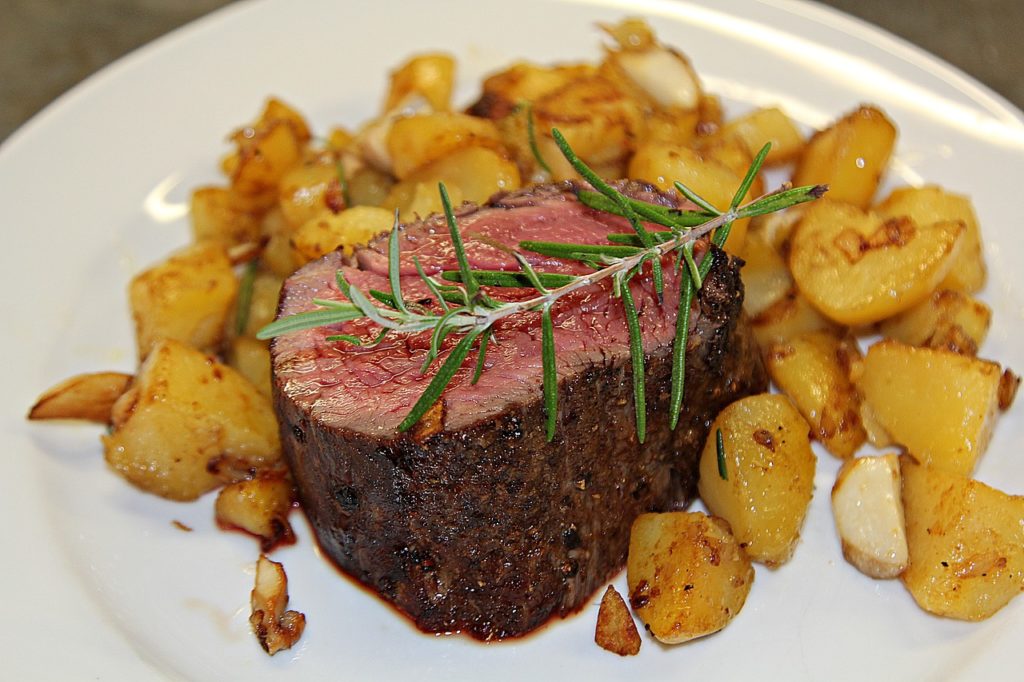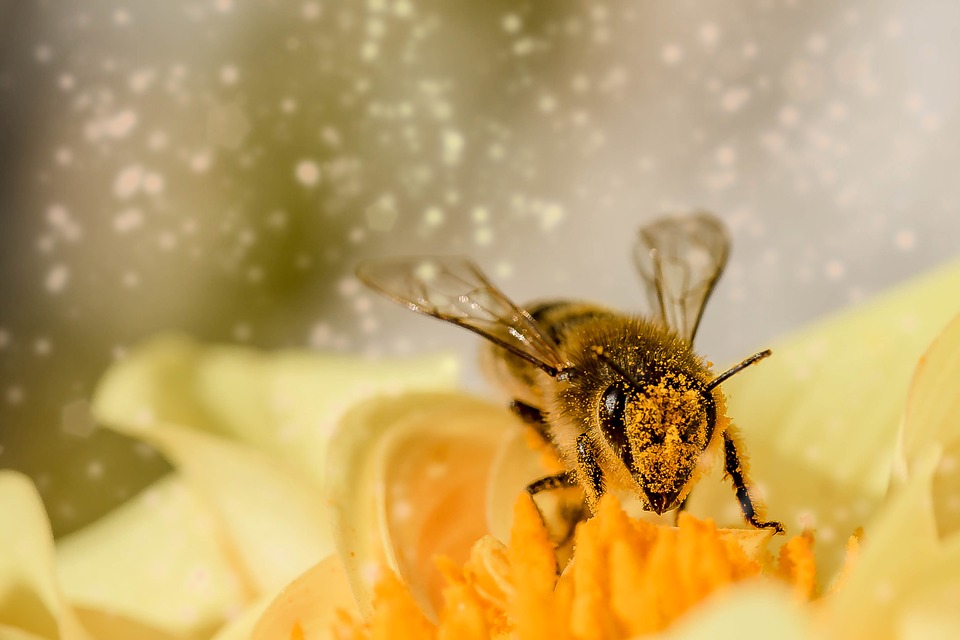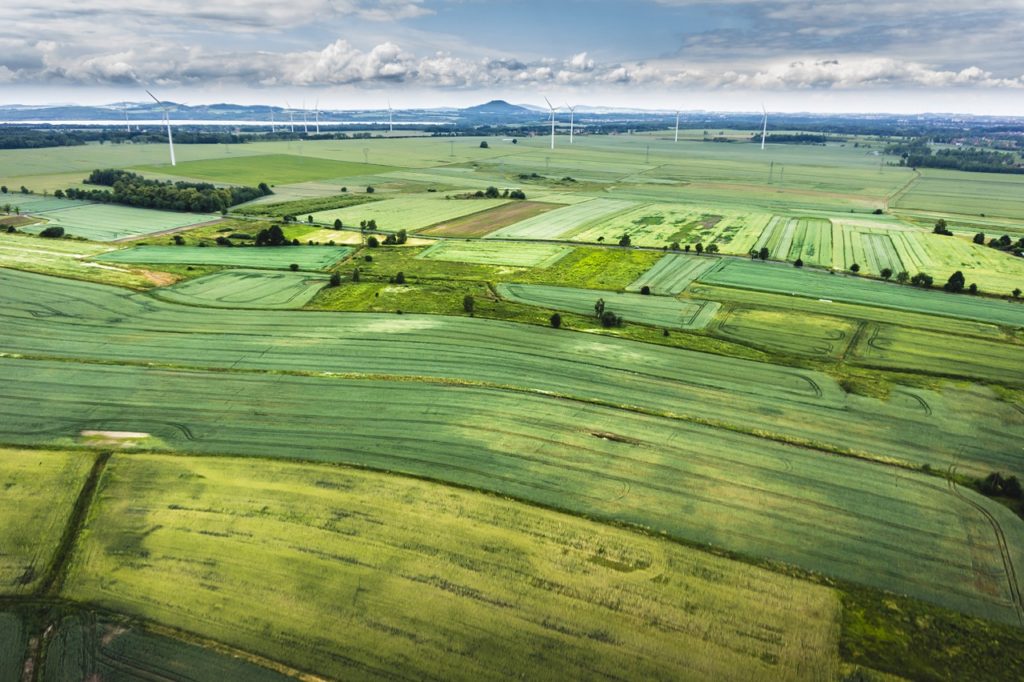
Bees like their meat and potatoes too!
Microbial meat and pollen potatoes that is!
Researchers Prarthana Dharampal of the University of Wisconsin-Madison and Shawn Steffan, with the Department of Agriculture’s Agricultural Research Service (ARS) analyzed 14 different bee species spanning six families (Melittidae, Apidae, Megachilidae, Andrenidae, Halictidae, Colletidae) and found that all families ranked higher in the food chain than that of strict herbivores. Trophic levels are used to define an organisms location in the food chain. Plants which obtain energy from sunlight are at trophic level 1 (TP1), herbivores trophic level 2 (TP2), and carnivores trophic level 3 (TP3). The average trophic level of each bee species analyzed varied but averaged at 2.6 placing bees somewhere between herbivores and carnivores (Figure 1). Researchers are digging deeper to reveal how and of what kind of meat bees are eating that is classifying them higher than the strict herbivores we previously assumed many were.

This new idea that bees are eating “meat” may not come as a surprise to many of you. If you’re a beekeeper you’ve likely encountered the cannibalistic behavior of worker honeybees consuming young brood when stressed for pollen resources. Other bees like wasps and bumblebees also exhibit similar behaviors. If this isn’t why researchers are trying to elevate the trophic level of bees, then what is?

We know that bees feed on nectar (carbohydrates) and pollen (fat, protein). We also know that the microbes found in bees’ digestive fluids play a crucial role in fermenting pollen into bee bread. The lactic acid producing bacteria found in the digestive fluid lowers the pH of the stored pollen to a level that inhibits pathogenic growth and allows for greater nutrient absorption when consumed. These microbes break down pollen protein into essential amino acids, complex starches into simple sugars and vitamins. Microbes can therefore be considered heterotrophic (TP2) though as ultimate decomposers we know they span the entire food web.
Steffan and his team wanted to understand just how important these microbes are in the diet of bees. The researchers isolated male mason bee larvae that were fed a spectrum of sterile to non-sterile pollen. The results associated adverse effects such as weight loss, prolonged growth and mortality with increased pollen sterility. Results indicate that microbes must be a crucial part of the bees diet and that bees may be selectively foraging for microbial meat in pollen.
“Bees are actually omnivores, and their meat is microbes. This finding may open a new window on why bees are in trouble: Anything that disrupts the microbial community in a bee’s food, whether it is high heat linked to climate change, fungicides or another stressor, could be causing developing bees to starve.”
We have just begun to understand the imperative role microbes play in the health of the environment, humans and pollinators. Microbes have kept natural systems resilient in the past. Negative impacts of climate change and the overuse of pesticides are serious concerns. Increased global warming can inhibit some of the core bacteria that once thrived on pollen. Pesticide usage results in sterile pollen and poor nutrition for its consumers. With the loss of many native pollinator species, it is important that we address how to safeguard what remains. A paradigm shift away from conventional agriculture toward more regenerative practices is necessary if we are to chip away at the myriad of threats against our pollinators and food supply.

Conventional agriculture oversimplifies natural systems and requires large amounts of pesticides to function. Overuse of pesticides is threatening our environment and the pollinators responsible for our food supply. 
Nature works in redundant systems. Increasing biodiversity through regenerative agriculture improves soil health providing better nutrition for pollinators and higher quality food for humans.

Great vision, Jennifer! I enjoy your writing!